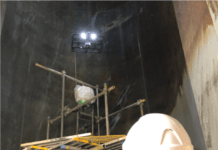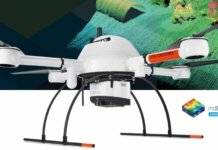BP’s North Sea business has completed a pilot project using drones to remotely monitor methane emissions of the company’s offshore assets.
The project combined a FlyLogix fixed-wing unmanned aerial vehicle (UAV) with sensor technology originally designed by NASA for the Mars Curiosity Rover.
The UAV circled the Clair platform at a radius of 550 meters (1,800 feet) for 90 minutes, traveling a total of more than 185 kilometers (115 miles). The pre-programmed drone, once airborne, managed itself autonomously, and throughout the flight, it live-streamed data collected by the SeekOps methane sensor.
“Improving our knowledge, understanding and performance by testing new technologies and working closely with suppliers is central to the North Sea’s carbon-reduction plan, which aims to limit greenhouse emissions in our North Sea business,” comments Ariel Flores, BP’s North Sea regional president. “This pilot project represents a significant step forward in our ability to do that.”
BP expects to deploy the specialist drone to all of its North Sea assets in 2025, including ETAP and Glen Lyon.
“We wanted to test a method for collecting large amounts of data on our emissions over long periods of time, without having to send people or equipment offshore,” explains Joe Godwin, project manager and field environmental lead for the Clair platform. “The solution would also have to deal with the turbulent atmospheric conditions that we typically experience offshore in the North Sea.”
Godwin says the UAV was “tracked and remotely controlled by a team of three qualified pilots using satellite communications and radio link from the remote Island of Papa Stour,” allowing the team to stay on their onshore base.
The North Sea trial follows the rollout of a leak detection drone program in BP’s U.S. operations. BPX Energy – BP’s U.S. onshore oil and gas business – is using drone-mounted leak detection technologies, which enable up to 1,500 well sites to be surveyed every month across all of its operating basins. The flights generate data around the location and size of a leak and issue a work order to fix it.
BPX Energy’s CEO, Dave Lawler, says, “We are encouraged by the efficiency gains achieved since drone inspections were fully deployed. Today, we are able to run leak detection and repair programs in all of our assets at around $40 per well, and we believe costs will continue to fall.”










